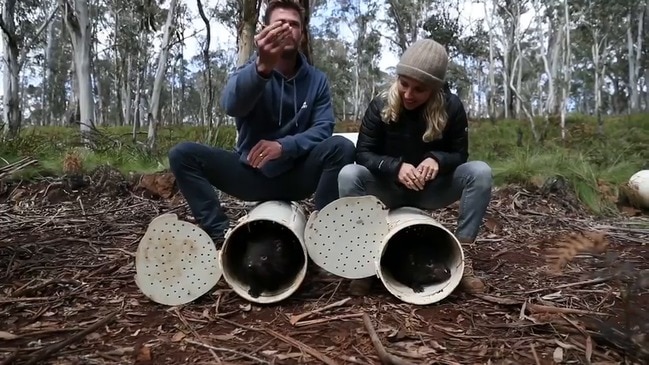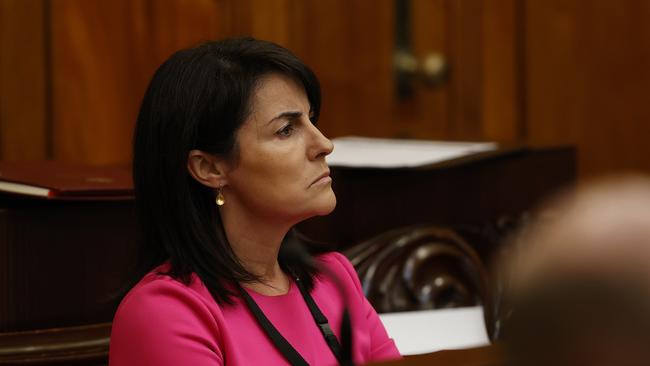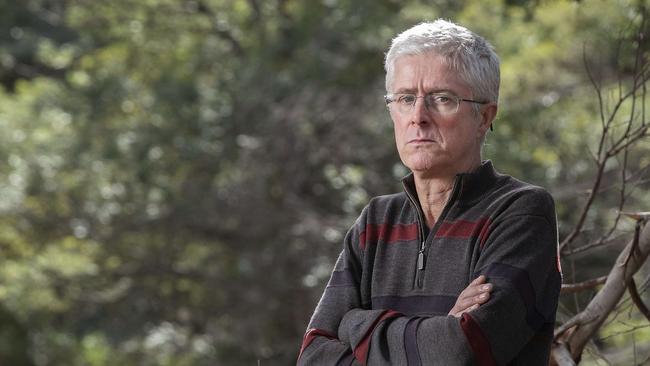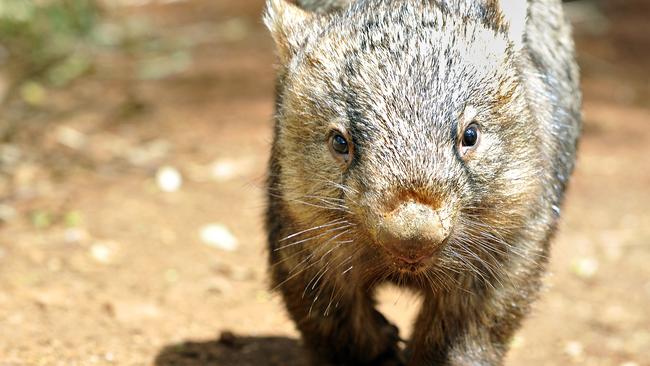’Iconic’ Tasmanian species killed among millions of native animals, new crop protection figures reveal
Data has revealed millions of native animals - including wombats, swans and Kangaroos - were killed in the name of crop protection in the last three years. FULL FIGURES >>

Tasmania
Don't miss out on the headlines from Tasmania. Followed categories will be added to My News.
MILLIONS of native animals have been killed across Tasmania over the past three-and-a-half years under crop protection permits, according to “staggering” new data.
The shocking figures were provided by Primary Industries and Water Minister Jo Palmer following a request by a parliamentary budget estimates committee.
The data shows 1,176,002 Bennett’s wallabies and 1,088,117 rufous wallabies across the state were culled from 2019 to June 6 this year, under what are now known as Property Protection Permits.

In the same period, 168 common wombats were slaughtered, 6148 black swans, 412 green rosellas, 24,108 forester kangaroos and 14,103 sulphur-crested cockatoos.
The data also shows 116 galahs were culled, 5505 mountain ducks, 26 purple swamphen, 18 yellow-tailed black cockatoos, 530,487 brushtail possums – and thousands more native birds and mammals.
Given the figures, the Greens are now pushing for a parliamentary inquiry into wildlife protection and management.
“The numbers of Property Protection Permits handed out by this government are staggering, and the numbers of animals killed is heartbreaking,” crop protection, Greens environment and biodiversity spokesperson, said.
“In 2021, there were 859,304 native animals killed under Property Protection Permits. That’s nearly 100 every hour for an entire year.”
Dr Woodruff said the procedure for granting permits had “no on-ground assessment” and instead involved a mere “tick-and-flick approval”.

“The government relies on basic drive-by surveys to assess native animal numbers, a devastatingly ineffective measure of the impacts of mass killings,” she said.
“Where is the assessment of biodiversity impacts or justification?”
BirdLife Tasmania convener Eric Woehler described the figures as “appalling”, “carnage”, and a “sad reflection on how the system considers or deals with wildlife”.
“It’s carnage, there’s no other way to describe it, it’s carnage for our wildlife and it puts to bed once and for all our claims of being a clean, green state,” he said.
“The more you look at these tables, and the numbers and species involved, the more they defy logic and comprehension.
“The process is geared towards issuing permits. There’s no checking of whether a species is actually causing a problem. There’s absolutely no scrutiny, there’s no follow-up.”
He said culling was usually the first option in dealing with wildlife, rather than the last.
“It’s easier to shoot the hell out of a flock of cockatoos – quicker, easier, more convenient for the landowners.”
Tasmanian Conservation Trust CEO Peter McGlone said he wasn’t surprised over the numbers of wallabies culled, but was “shocked” by the birds – many of which were iconic to Tasmania – and the killing of wombats.
“The black cockatoos, they’re the iconic coastal species,” he said.
“If you’re even a casual bushwalker, you’ll notice currawong are the classic species you’ll see in high altitudes.

“I can’t bloody believe they’re wanting to cull them. These are birds that should never be, there should not be the potential for lethal control, absolutely not.”
Mr McGlone said humane alternatives like fencing and netting needed to be used when protecting high value crops.
“It’s just devastating, totally devastating,” he said.
“The people that buy the crops don’t even know about this.
“This is where your food comes from – it comes from killing black swans and currawongs and yellow tailed black cockatoos.”

A government spokesperson said the permits were issued where there was a “demonstrated need to protect crops and/or stock, or to protect equipment or infrastructure”.
“To be clear, landowners use a range of management measures, such as fencing, netting and noise-scarers, to try to keep wildlife populations at a sustainable level in the agricultural landscape and protect their investment and livelihood,” they said.
They said permits were only issued following an assessment of damage caused and alternative measures in place, with animal welfare standards and guidelines that “must be upheld”.
The Tasmanian Farmers and Graziers Association was contacted for comment.
Top 10 native animals culled in Tasmania between 2019 and 2022
- Bennett’s wallabies: 1,176,002
- Rufous wallabies: 1,088,117
- Brushtail possums: 530,487
- Forester kangaroos: 24,108
- Sulphur-crested cockatoos: 14,103
- Black swans: 6148
- Mountain ducks: 5505
- Wood ducks: 2980
- Native hens: 2543
- Cape Barren geese: 1882
More Coverage
Originally published as ’Iconic’ Tasmanian species killed among millions of native animals, new crop protection figures reveal





